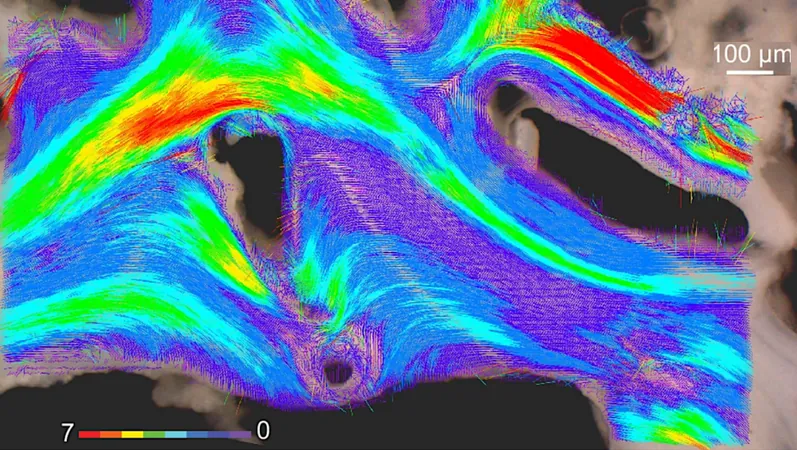
Groundbreaking Discovery: Osmotic Energy Conversion in Hydrothermal Vents Could Hold Secrets to Life's Origins!
2024-10-01
In an extraordinary breakthrough, researchers have unveiled that natural hydrothermal vent precipitates deep beneath the ocean contain aligned nanopores that enable the selective transport of ions, thereby facilitating a process known as osmotic energy conversion derived from ion gradients. This groundbreaking discovery indicates that such selective ion transport, typically observed in cell membranes, could also occur through inorganic nanostructures formed under geochemical conditions in the ocean depths.
This finding not only sheds light on how life-sustaining processes for energy harvesting can occur abiotically in hydrothermal vents but also opens the door for new strategies in developing blue energy technologies that utilize salinity gradients.
Hydrothermal Vents and Their Role in Life's Origins
Situated in sunlight-deficient depths, hydrothermal vents (HVs) are massive chimney-like structures that continuously emit hot, mineral-rich water into the colder surrounding seawater. Over time, these vents can grow up to dizzying heights of 60 meters while supporting unique ecosystems that are starkly different from those found above sea level.
Remarkably, scientists attribute a significant role to such vents in the origins of life on Earth. An international team—led by a collaboration between the Earth-Life Science Institute (ELSI) and the RIKEN Center for Sustainable Resource Science—conducted extensive studies on HV samples taken from the Shinkai Seep Field, located at an astounding depth of about 5,700 meters in the Mariana Trench, the deepest part of the world's oceans.
Brucite and Ion Transport Mechanisms
The HVs in this area are primarily composed of a mineral called brucite, formed from the reactions between olivine—a common mineral in Earth's mantle—and seawater. Researchers observed that small brucite crystals, around 100 nanometers in size, aggregate to form a thick membrane that facilitates the flow of hot vent water mixed with seawater.
Through intricate microscopic and synchrotron X-ray diffraction experiments, the team discovered that these brucite nanocrystals were arranged in orderly patterns that facilitated efficient ion transport—essential for natural osmotic energy generation. This arrangement offers tantalizing evidence that the very structures may have acted as natural energy converters in the ancient oceans, nurturing early biological processes.
Potential for Life Beyond Earth
Furthermore, their experiments revealed that the nanopores function as selective ion transport pathways, capable of converting differences in ion concentrations—like sodium, potassium, and chloride ions—into electrical energy. This extraordinary mechanism mirrors the energy conversion processes found in all living organisms, suggesting that the origins of life could be deeply intertwined with the conditions present in ancient hydrothermal environments.
Fascinatingly, the implications of this study extend beyond Earth. Recent explorations of icy celestial bodies, such as Saturn’s moon Enceladus, have hinted at similar hydrothermal activity, raising the prospect that life-sustaining energy conversion processes may occur elsewhere in the universe.
As astrobiologists continue to investigate these astonishing findings, we stand on the brink of potentially uncovering the deeper secrets of life’s beginnings, both on Earth and beyond. Could hydrothermal vents hold the key to not just our origins, but the existence of life throughout the cosmos? Stay tuned as science dives into this remarkable frontier!


 Brasil (PT)
Brasil (PT)
 Canada (EN)
Canada (EN)
 Chile (ES)
Chile (ES)
 España (ES)
España (ES)
 France (FR)
France (FR)
 Hong Kong (EN)
Hong Kong (EN)
 Italia (IT)
Italia (IT)
 日本 (JA)
日本 (JA)
 Magyarország (HU)
Magyarország (HU)
 Norge (NO)
Norge (NO)
 Polska (PL)
Polska (PL)
 Schweiz (DE)
Schweiz (DE)
 Singapore (EN)
Singapore (EN)
 Sverige (SV)
Sverige (SV)
 Suomi (FI)
Suomi (FI)
 Türkiye (TR)
Türkiye (TR)